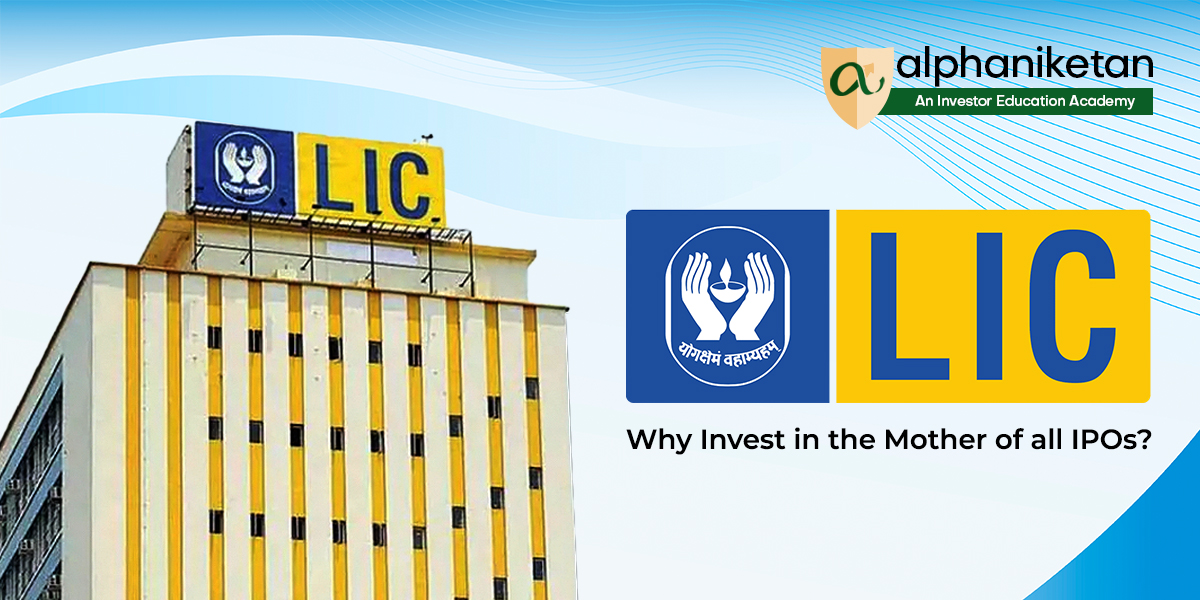Yes! India’s Aramco moment is finally here! The juggernaut that is LIC, or the Life Insurance Corporation of India, has finally filed its draft red herring prospectus (DRHP) with the Securities and Exchange Board of India (SEBI), the stock market regulator.
Now while a lot of literature has already been penned on this big event, here are the 7 most important things that you ought to know about LIC:
- It’s the Government selling a portion of its stake, not LIC: The government is looking to offload over 31.6 Crore shares in this offer for sale. The listing of LIC is for the sole purpose of allowing the government to sell shares and monetize a portion of their stake. Media reports suggest that the government expects to net Rs. 65,000 Crores through this stake sale. This will in turn allow the government to meet its disinvestment target set in the revised Budget 2021-22. With only 5% of shares being offered on the block, the government could sell further to boost their non-tax revenues in the future.
- India’s Aramco moment: When Saudi Arabia listed the state-owned Aramco, the energy company, it became the biggest initial public offering in the world. The company was already worth a trillion dollars at the time of listing. When LIC lists on stock exchanges, it may not become a trillion-dollar company instantly, yet it would be the biggest IPO to get launched in the Indian markets in terms of size. For some perspective, When One97 Communications, the holding company of the payment gateway Paytm, went public, at $2.1bn, it was then the biggest IPO just a few months ago.
- LIC would be the 3rd largest Listed Company in India: If the government realises its target, LIC would probably go on to become the third most valuable company listed in India, just behind Reliance Industries and TCS. The share would be priced at over Rs 2,000. At this price, LIC gets a market value of ~$170bn. To put things in perspective, LIC would be valued at around 7% of the BSE 500 index market cap of $2.8 trillion, which accounts for over 85% of the market value of shares listed on the Bombay Stock Exchange.
- The biggest asset manager in India: LIC manages assets worth Rs. 39.5 Lac Crores. That is roughly 1.1x the size of the entire mutual fund industry today! About 25% of those assets or Rs. 10 Lac Crores are parked in equity holdings in the stock market, which accounts for roughly 4% of the total market capitalization. In fact on a free-float basis, LIC today owns approx. 9% of the entire free float of listed stocks in India!
- It’s the Numero Uno player by miles: No other insurance company comes anywhere near LIC’s size. LIC controls 64.1% of the total premium paid in 2020-21. It is 66% in the new business premium. If a portfolio manager wishes to bet on the prospects of India’s insurance sector, there is no way they can miss out on LIC. LIC will very likely get included in the benchmark indices like the BSE Sensex and the NSE Nifty 50 in the coming years.
- Embedded Value or EV matters: Insurance companies are evaluated on embedded value multiples. What is this exactly? Well, Embedded Value is nothing but the present value of shareholders’ interests in the profits that are distributable from the assets. It considers aggregate risks in the existing life insurance business. The prospectus puts LIC’s embedded value at $71bn. Rival SBI Life trades at a valuation of nearly 3x EV. At Rs 2000-2100 per share, LIC could get a multiple of 2-2.1x embedded value.
- LIC’s Unique history: LIC is the classic representation of nationalisation in India. It was formed by merging 245 private life insurance companies on 1 September 1956. The disinvestment exercise is a milestone in the history of India’s most valuable state-owned company. In fact, until 2000, LIC was the only life insurance company that was allowed to operate in India. India’s Insurance Regulatory and Development Authority has categorised LIC as a domestic systemically important insurer based on size, market importance, and global interconnectedness – which basically means that in the event of any extreme market stress, the Government of India will not allow let LIC fail (Anyone remembers the fiasco with AIG during the height of the housing crisis in 2008 in the US?)
All said and done, the listing of LIC is certainly a watershed moment in the Indian Capital Markets history. Let’s see what is in store for the new shareholders who will now get an opportunity to participate in the rising wave of insurance penetration in a country like India, where financialization of savings has been the cornerstone of our structural bull market that has been witnessed since 2003.
Thank you for reading this post, don't forget to subscribe!




